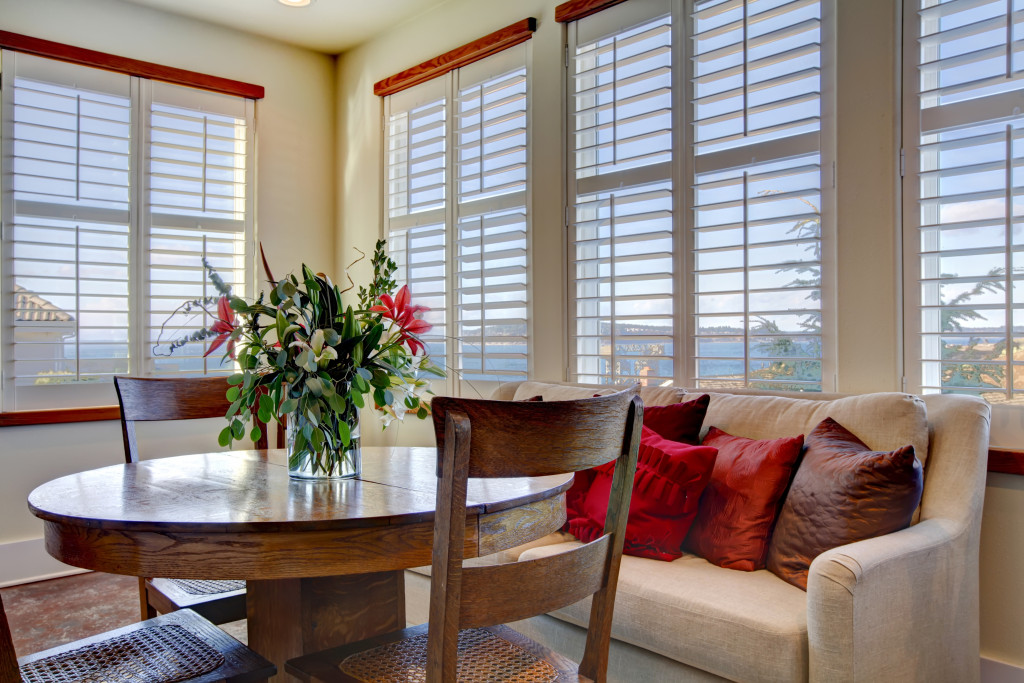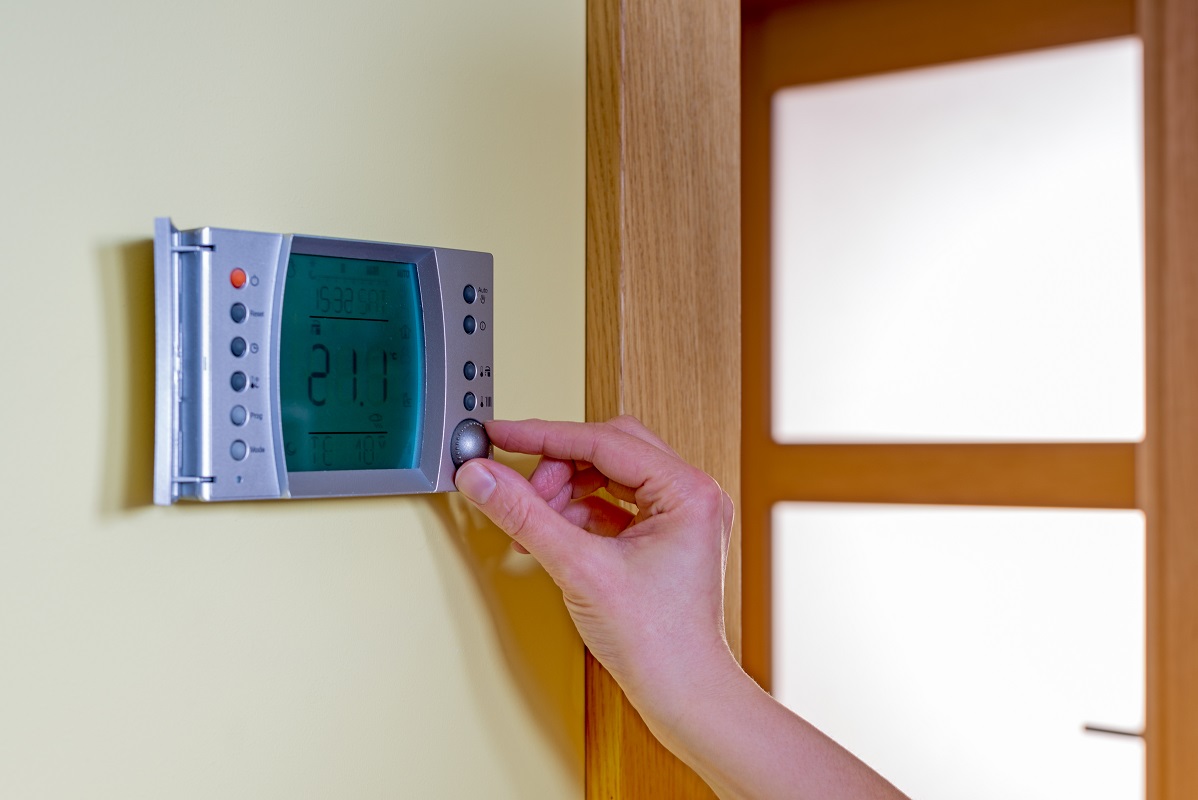- Assess your ventilation system to identify any obstructions or damage that can reduce airflow and lead to poor indoor quality.
- Replace outdated windows with energy-efficient ones that allow fresh air to flow while keeping the temperature regulated.
- Incorporate custom rooflights that utilize the chimney effect to ensure constant air circulation in your home.
- Install exhaust fans, dehumidifiers, or an air exchange system in areas like the kitchen, bathroom, and basement for improved ventilation.
- For maximum efficiency and comfort, utilize smart solutions like automated ventilation systems, smart thermostats, and IoT devices.
Proper air circulation is crucial for maintaining a healthy and comfortable home. A well-ventilated home improves indoor air quality, reducing the risk of respiratory problems and other health complications. Inadequate ventilation can also cause structural damage to your home over time.
Poor indoor air quality is a leading cause of respiratory problems. A well-ventilated home helps to remove pollutants, allergens, and other irritants that can reduce indoor air quality. Proper ventilation also removes excess moisture, which can lead to mold growth and home structural damage.
This blog post aims to provide homeowners with valuable information on enhancing air circulation in their homes.
Assessing the Current Ventilation System
To enhance air circulation in your home, you must first assess the current ventilation system. You can do this by inspecting the current system’s air vents, ducts, and other components. Any obstructions or damage to these components can reduce airflow, leading to poor indoor air quality.
Identify Areas with Poor Airflow
Areas in your home that experience poor airflow are usually the most vulnerable to inadequate ventilation. These areas include the kitchen, bathrooms, and basement. Identifying the areas with insufficient airflow will help you take steps to improve ventilation.
Evaluate Existing Ventilation Mechanisms
Existing ventilation mechanisms, such as exhaust fans, attic vents, and natural ventilation systems, should be evaluated.
The evaluation should include checking if the exhaust fan is still functioning as it should and if the attic vents are still clear of debris. Natural ventilation mechanisms such as trees should also be reviewed for blockages.
Understanding the Impact of Inadequate Ventilation
Inadequate ventilation can lead to poor indoor air quality and numerous respiratory problems. Poor ventilation can lead to the accumulation of excess moisture, leading to structural damage and mold growth. Insufficient airflow can also lead to unpleasant odors and discomfort.
Upgrading and Improving Ventilation
Upgrading your ventilation system is vital to ensure that stale or contaminated air doesn’t linger in your home. While there are various ways to improve your home’s ventilation, some require a substantial investment, while others are relatively affordable.
Installing Energy-Efficient Windows
One of the most effective ways to improve ventilation is to replace outdated windows with more energy-efficient ones.
Modern energy-efficient windows have advanced materials and technology that allow fresh air to flow while regulating the temperature. They can prevent drafts and leaks, leading to energy loss and higher utility bills.
Utilizing Custom Rooflights
A rooflight is an opening in the roof that provides natural daylight and ventilation. The custom rooflights with a framed design are perfect for providing natural ventilation. It allows hot air to escape, keeping the house cool and fresh without using electric fans or air conditioning.
The framed design of custom rooflights makes them effective at enhancing air circulation since they take advantage of the chimney effect. The hot air rises, creating a vacuum that pulls fresh air in from the bottom, ensuring constant air circulation and comfort throughout your home.
Enhancing Attic Ventilation
When discussing ventilation, it’s essential to remember that attics also require proper ventilation. An attic vent system helps maintain a stable attic temperature and prevent moisture buildup.
Ridge vents and gable vents are the most popular vent systems, allowing hot air to escape without creating negative pressure and permitting fresh air to enter the exterior vents.

Addressing Specific Areas
Before diving into the specifics of improving airflow in certain areas of your home, it’s essential to identify problem areas.
Improving Kitchen Ventilation
Kitchens are notorious for producing steam, smoke, and strong odors. Without proper ventilation, these elements can linger and create an unpleasant atmosphere.
Installing an exhaust hood above your stove can assist in enhancing ventilation and reducing odors. Choose a hood that matches the size of your range and is vented to the outside.
Enhancing Bathroom Ventilation
Bathrooms are another problem area when it comes to air circulation. Without proper ventilation, bathrooms can become damp and musty.
An exhaust fan can improve airflow and reduce humidity. Look for a fan that matches the size of your bathroom and is rated for the square footage.
Upgrading Basement Ventilation
Basements are often humid and damp due to their location below ground level. This can lead to musty odors and mold growth without proper ventilation.
Having a dehumidifier can help to reduce humidity levels and prevent dampness. You can also consider installing a basement ventilation system, such as an air exchange system.
Incorporating Smart Ventilation Solutions
If you want to take your ventilation to the next level, consider incorporating smart solutions. Smart ventilation systems can be controlled remotely and adapt to changes in your home’s humidity levels.
Exploring Automated Ventilation Systems
Automated ventilation systems can be programmed to turn on and off based on your schedule. These systems can be installed in specific zones, such as bedrooms or living spaces, and can be controlled via a central control panel or mobile app.
Automated systems can also be synced with smart thermostats to increase energy efficiency and reduce costs.
Implementing Smart Thermostats

Smart thermostats can do more than just control your home’s temperature. Many models can also adjust ventilation levels based on humidity and air quality. Smart thermostats can help create a comfortable and healthy living space by optimizing ventilation.
Utilizing IoT Devices
IoT devices, such as air quality monitors and intelligent sensors, can help to monitor and optimize air circulation in your home.
These devices can provide valuable insights into how and when to adjust ventilation levels by measuring humidity, temperature, and air quality. Integrating IoT devices into your ventilation system creates a truly optimized and efficient airflow solution.
Maintaining a well-ventilated home is crucial to good health. Enhancing air circulation in your home will help reduce indoor air contaminants, eliminate excess moisture, and prevent structural damage.
Upgrades like installing energy-efficient windows, custom rooflights, and attic vents can contribute immensely to proper ventilation.
Be sure to assess the current ventilation system, identify areas with poor airflow, and consult with a professional to help enhance air circulation in your home.